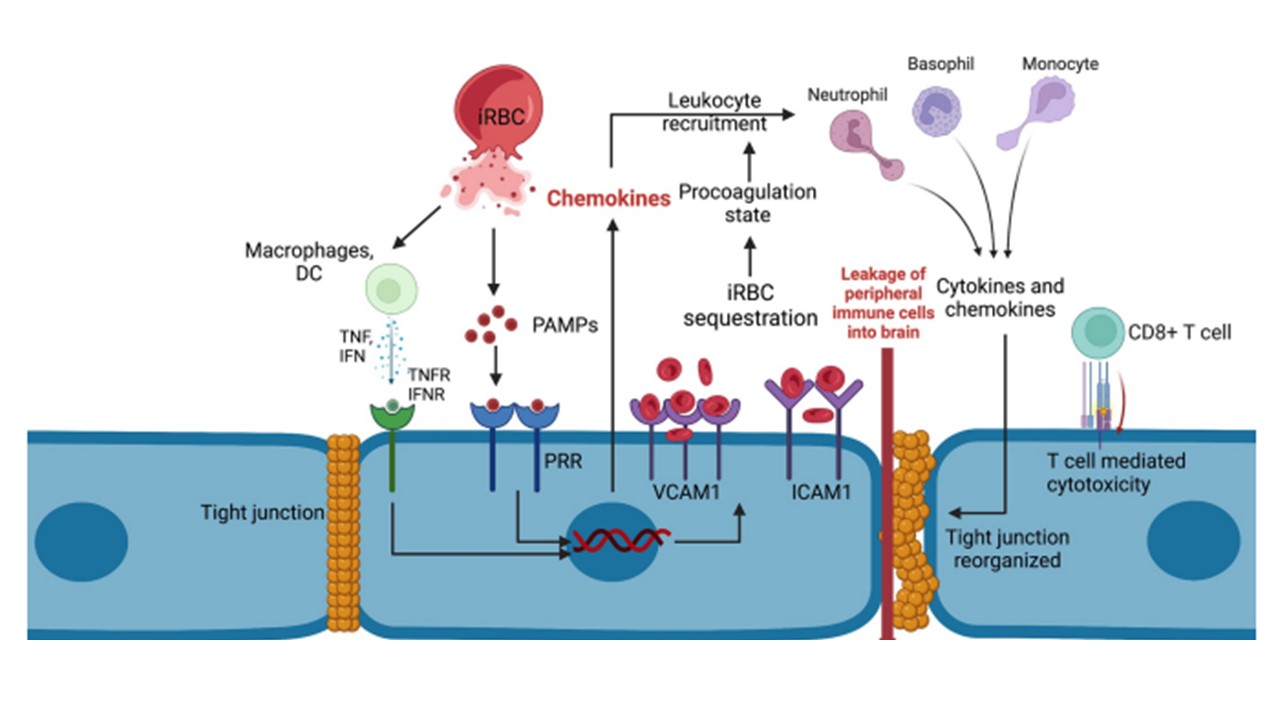Pathogenic mechanisms leading to the breakdown of BBB. Rupture of iRBCs and release of merozoites into the bloodstream activate the macrophages and dendritic cells. This results in elevation of serum levels of TNF and IFN gamma. TNF and IFN gamma are known to up-regulate the expression of VCAM1 and ICAM1 on the endothelial cells. This in turn leads to an increase in the recruitment of iRBCs to the endothelial cells, thus promoting localized inflammation and procoagulation pathways. Meanwhile, the PRRs, such as Toll-like receptors expressed on the endothelial cells, recognise malarial PAMPs and trigger the secretion of proinflammatory cytokines like IL-6, IL-12, and TNF. The cytokines and chemokines released locally recruit leukocytes such as basophils, neutrophils, and natural killer cells to the site of inflammation. These cells, upon activation, release chemokines like MIP-1α and MIP-1β, which recruit more leukocytes to the site of inflammation. The elevated levels of chemokines and cytokines also induce reorganisation of tight junction proteins affecting the BBB integrity. Endothelial cells also present the parasitic antigen via MHC Class I molecules to CD8+ T cells in the brain. This triggers the CD8+ T cell–mediated cell death of endothelial cells mediated by granzyme B. These molecular events in tandem disrupt the BBB integrity and contribute to CM pathogenesis.
Ramachandran A, Sharma A. Dissecting the mechanisms of pathogenesis in cerebral malaria. PLoS Pathog. 2022 18(11):e1010919.
